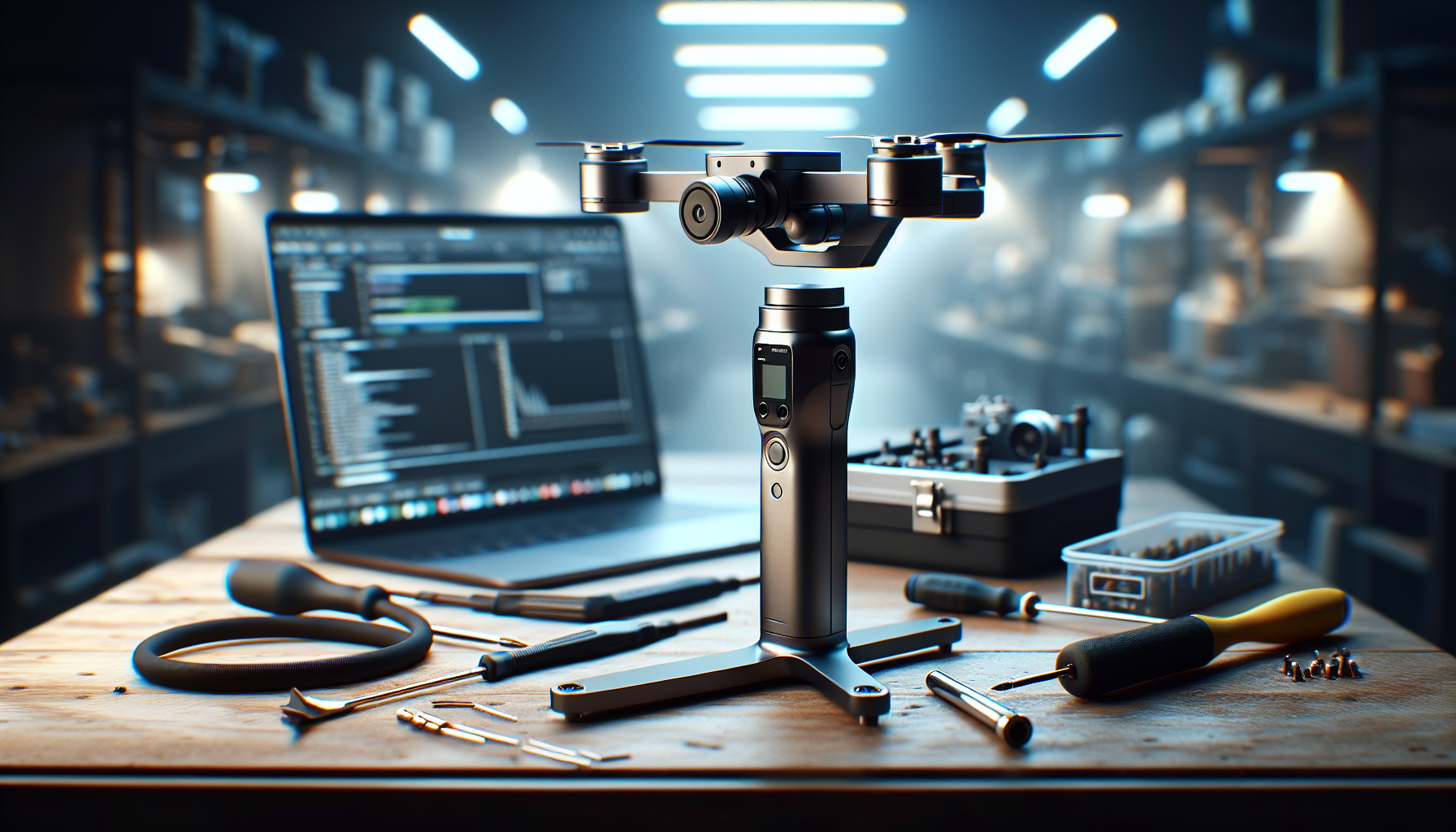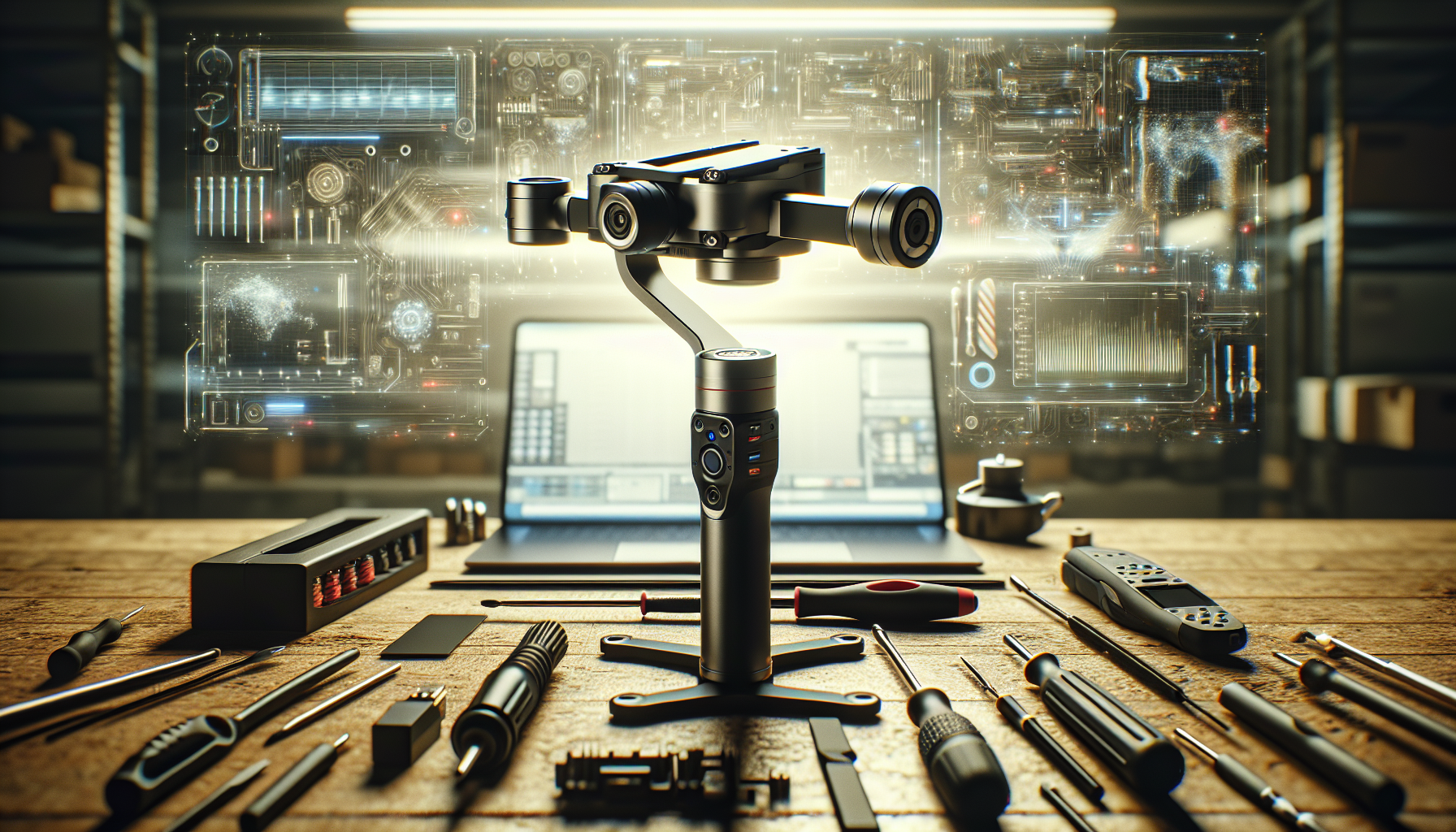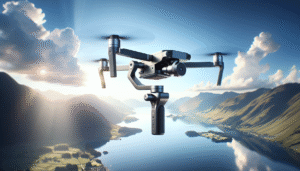Have you ever faced the daunting task of updating the firmware on your gimbal, only to feel overwhelmed by the technical jargon and potential risks involved? I’ve been there, and I know how it feels. The thought of accidentally turning your prized gimbal into a very expensive paperweight isn’t exactly appealing. Yet, keeping your device up-to-date is crucial for optimal performance and access to new features. So, let’s journey through the landscape of gimbal firmware flashing together, unpacking the tools, risks, and safe update methods involved.

Understanding Gimbal Firmware
Firmwares are like the unseen forces running devices—from washing machines to your trusty gimbal. They’re the low-level software programs coded into your device’s memory, orchestrating every operation. Your gimbal needs firmware updates to fix bugs, patch vulnerabilities, or introduce new features. It sounds simple enough, but there’s more under the hood.
What Exactly is Gimbal Firmware?
Gimbal firmware is essentially the set of instructions your device follows to ensure a smooth, stable shooting experience. Just like the software on your smartphone or computer, firmware requires updates to stay in tip-top shape. The updates might introduce new shooting modes, enhance motor response, or refine stabilization algorithms. They’re the unsung heroes of our cinematic dreams.
Tools Required for Firmware Flashing
Venturing into firmware updating necessitates having the right tools in your arsenal. Missing a crucial tool can lead to frustration and possibly a bricked device. Don’t worry, though, as it’s not as terrifying when you’re prepared.
Essential Tools for the Task
Let’s break down the essentials you need:
| Tool | Purpose |
|---|---|
| USB Cable | Connects your gimbal to your computer. |
| Compatible Software | Depending on your gimbal brand, this is crucial for the update process. |
| Internet Connection | Required for downloading firmware updates. |
| Power Source | Ensure your gimbal is adequately charged to prevent midway shutdowns. |
Finding the Right Software
Every brand has its own specific software which you’ll need to download before starting. Brands like DJI, Zhiyun, and Moza have platforms tailored for this exact purpose. Trust me, using the correct software streamlines the whole process and significantly reduces the risk of something going terribly wrong.

The Risks Involved
There’s no sugar-coating this: updating firmware does carry risks. Think of it like learning to ride a bicycle; you won’t master it without a few wobbles and occasional falls. But knowing the potential pitfalls beforehand can help you avoid them.
What Could Go Wrong?
Several things could derail your update:
- Bricking the Gimbal: An interrupted update or wrong firmware can render your device unusable.
- Compatibility Issues: Using the incorrect firmware for your model can lead to functioning errors.
- Data Loss: Some updates may wipe pre-set configurations or user profiles.
Understanding these risks is a good start. It’s not about scaring you off; it’s about ensuring you’re cautious and prepared.
Safe Firmware Update Methods
Let’s explore the process of safely updating your gimbal’s firmware. Knowing the steps beforehand builds confidence and eases the trepidation, a bit like having a map before a road trip.
Preparing for the Update
Preparation is key, believe me. Here’s what you should do before starting:
- Back Up Configurations: Save your gimbal’s current settings.
- Charge the Battery: Ensure your gimbal is fully charged or plugged into a power source.
- Check Gimbal Compatibility: Ensure the update is intended for your specific gimbal model.
Once you’re prepared, the chances of encountering issues significantly decrease.
Step-by-step Guide to Flashing Firmware
Following the right procedure ensures a smooth update process. Here’s a step-by-step guide to help:
- Install the Brand’s Software: Download and install the specific software for your gimbal.
- Connect Your Gimbal to Your Computer: Use a compatible USB cable.
- Access the Firmware Update Section: Open the installed software, navigating to the update section.
- Download the Latest Firmware: Ensure it’s the right version for your model.
- Follow the On-Screen Instructions: Proceed as guided by the software.
- Verify the Update: Once complete, restart your gimbal and check for new features or enhancements.
It’s like carefully following a recipe—except here, the cake is your fully functional and optimized gimbal.
Troubleshooting Common Issues
Even the best-laid plans can go awry. If you face issues, here are some common fixes:
- If the update freezes, restart both software and gimbal, and try again.
- Check your internet connection if the download stalls.
- Ensure the USB cable is securely connected if the update seems unresponsive.
Post-Update Tips
Once you’ve triumphantly updated your firmware, bask in the glory of a job well done. But there are still a few things to keep in mind moving forward.
Functionality Testing
After updating, it’s prudent to test the functionality:
- Check Basic Functions: Test stabilization, orientation changes, and shooting modes.
- Compare Before and After Features: Note any enhancements or changes.
- Resolve Any Anomalies: If functionality issues persist, consult the user manual or support.
Keeping Future Updates in Mind
Now that you’re a firmware-flashing virtuoso, stay updated on future releases. Remember:
- Regularly Check for Updates: New features and fixes can significantly enhance performance.
- Join User Forums: Stay connected with other gimbal enthusiasts for the latest tips and tricks.
Conclusion
Updating your gimbal’s firmware doesn’t have to be a hair-raising experience. With the right tools, an understanding of potential risks, and a step-by-step approach to safely flashing firmware, it’s manageable and beneficial. Remember the first time you learned to cook or tried a complex job for the first time? Just like those experiences, practice and preparation make perfect. So keep your gimbal updated, stay informed, and allow your creativity to soar to new heights with the latest features and enhancements. Who knows, you might even find yourself becoming the go-to guru in your circle of gimbal owners!
![Best Gimbal For DJI Mini 4 Pro In 2025 [Top Picks + Quick Deals]](https://droneaperture.com/wp-content/uploads/2025/06/best-gimbal-for-dji-mini-4-pro-in-2025-top-picks-quick-deals-1-300x171.png)
![Top 5 Drone Gimbals For Cinematic Footage Under $500 [2025 Tested]](https://droneaperture.com/wp-content/uploads/2025/06/top-5-drone-gimbals-for-cinematic-footage-under-500-2025-tested-300x171.png)
